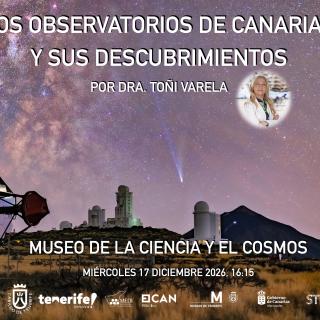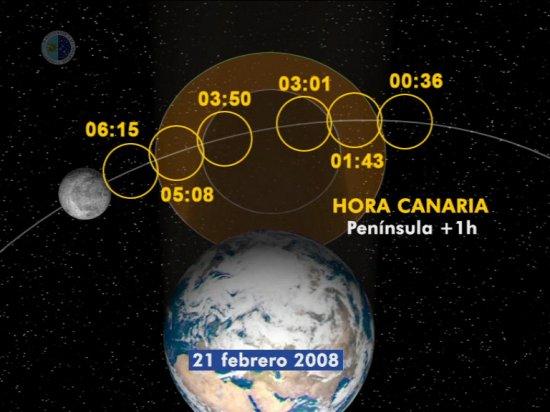It may interest you
-
 La Fundación CajaCanarias organiza la octava edición de su Foro Enciende el Cosmos, que este año volverá a contar con la participación de destacados científicos e investigadores de reconocido nivel nacional e internacional. Esta iniciativa de carácter divulgativo pretende expandir, desde la exploración científica, la comprensión del Universo en su conjunto, relacionando el pasado con el presente y con una clara búsqueda de respuestas de cara al futuro. El programa se divide en tres sesiones, a celebrar los días 13 de febrero, 20 de marzo y 10 de abril, en el Espacio Cultural CajaCanarias deAdvertised on
La Fundación CajaCanarias organiza la octava edición de su Foro Enciende el Cosmos, que este año volverá a contar con la participación de destacados científicos e investigadores de reconocido nivel nacional e internacional. Esta iniciativa de carácter divulgativo pretende expandir, desde la exploración científica, la comprensión del Universo en su conjunto, relacionando el pasado con el presente y con una clara búsqueda de respuestas de cara al futuro. El programa se divide en tres sesiones, a celebrar los días 13 de febrero, 20 de marzo y 10 de abril, en el Espacio Cultural CajaCanarias deAdvertised on -
 El Instituto de Astrofísica de Canarias (IAC) inaugura este miércoles 17 de diciembre una nueva edición del ciclo "Cosmoviaje 2.0. Lo que sabemos e ignoramos del Universo" y lo hará de la mano de la investigadora y directora del Museo de la Ciencia y el Cosmos Antonia Varela quien impartirá su charla " Observatorios de Canarias y sus descubrimientos" a las 16:15 horas. La entrada será libre y gratuita hasta llenar el aforo. Una experta de referencia en astrofísica y divulgación Antonia Varela es doctora en Astrofísica e investigadora del IAC, donde forma parte del Grupo de Calidad de Cielo yAdvertised on
El Instituto de Astrofísica de Canarias (IAC) inaugura este miércoles 17 de diciembre una nueva edición del ciclo "Cosmoviaje 2.0. Lo que sabemos e ignoramos del Universo" y lo hará de la mano de la investigadora y directora del Museo de la Ciencia y el Cosmos Antonia Varela quien impartirá su charla " Observatorios de Canarias y sus descubrimientos" a las 16:15 horas. La entrada será libre y gratuita hasta llenar el aforo. Una experta de referencia en astrofísica y divulgación Antonia Varela es doctora en Astrofísica e investigadora del IAC, donde forma parte del Grupo de Calidad de Cielo yAdvertised on -
 The European Solar Telescope (EST) project has taken a decisive step towards construction with the establishment of the Board of Governmental Representatives (BGR), marking the first formal commitment at the governmental level to this European flagship in solar research. Until now, EST has been driven by a scientific consortium of universities and research institutions across Europe. The creation of the BGR transforms EST into a collaboration among European nations, whose national governments lend political support to the project and to the creation of a future European Solar TelescopeAdvertised on
The European Solar Telescope (EST) project has taken a decisive step towards construction with the establishment of the Board of Governmental Representatives (BGR), marking the first formal commitment at the governmental level to this European flagship in solar research. Until now, EST has been driven by a scientific consortium of universities and research institutions across Europe. The creation of the BGR transforms EST into a collaboration among European nations, whose national governments lend political support to the project and to the creation of a future European Solar TelescopeAdvertised on
